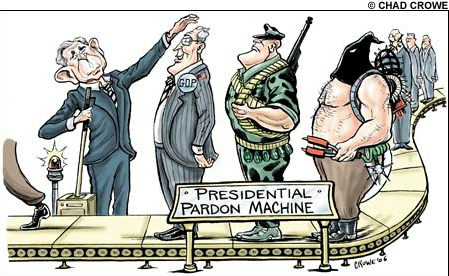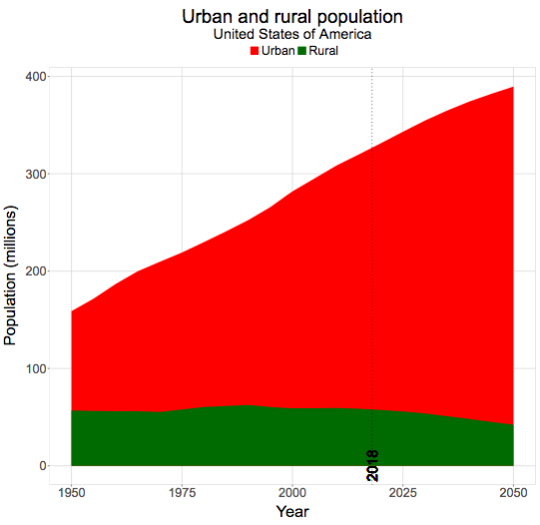
Here’s an interesting historically-based discussion of the pardon power, including the ongoing constitutional debate over its scope and limits.
Link to article
Link to US Civitas Facebook Discussion Thread
This is great for talking about impeachment and/or changes in the modern news media.
‘The big problem with comparing Nixon to Trump‘- Vox News
Link to US Civitas Facebook Discussion Thread
This post by William Galston provides a nice summary of Chevron deference — which is the legal basis for much federal agency rule-making discretion — and a preview of an important (even if not publicly salient) impact on federal government lawmaking and policy making Kavanaugh could have as SCOTUS justice. This is also useful for understanding the divide between liberals and conservatives over the proper scope of administrative discretion in a system committed to separation of powers and checks and balances.
‘Under the radar: The Supreme Court decision Brett Kavanaugh is most likely to overrule‘-Brookings
Link to US Civitas Facebook Discussion Thread

This would be useful for discussing issues of representation in the Senate, Electoral College, etc.
‘In about 20 years, half the population will live in eight states‘-Washington Post
Link to US Civitas Facebook Discussion Thread
“Narrated by Bowdoin College Government Professor Andrew Rudalevige, [Founding Principles] provides an introductory overview and basic understanding to American government, but one that is crucial to building citizen-leaders, promoting civic engagement, and working toward the common good.” The Founding Principles website is located here.
Here’s a Table of Contents:
I’m going to begin a post dedicated to curating sites that are aimed at facilitating learning about government through data and/or data-driven simulations. I will update this as I find more sites. I’m aiming here at quality more than quantity. For starters, I know of only three:
Political Scientist Ben Highton explains:
If the 2016 presidential vote is evenly split between the parties, which one is more likely to win the Electoral College and therefore the presidency? I estimate that the Democrats’ chances of winning the Electoral College vote are between 83 and 89 percent, giving them a significant advantage. This argument contrasts with those who are cautious of a Democratic advantage, such as Jonathan Bernstein and Harry Enten. The reason I predict such a significant advantage is because of ongoing, long-term trends altering the electoral outlook in a number of key swing states… (keep reading)
Highton offer a more technical explanation of his methodology here.
Back in 2010, when Congress was contemplating creation of the Consumer Financial Protection Agency (CFPA), Political Scientist Steven Teles wrote an interesting review of Daniel Carpenter’s 856 page history of the Food and Drug Administration, from which Teles drew three “important lessons” for those who favor effective regulation of the financial industry:
First and foremost, while Americans’ skepticism of government is strong, it is not insurmountable. Many Americans think of “bureaucrats” as either ineffectual or self-interested power grabbers, but few feel that way about employees of the FBI, the military, the Social Security Administration, or the National Institutes of Health. And because Americans view these agencies in a positive light, they and their representatives in Congress have been willing to grant them broad power and authority, and in some cases to allow them to exercise power that they have not been explicitly granted—proof that Americans do not oppose handing power to government when they believe it is in trustworthy hands. Just as important, as a result of their reputation these agencies have been able to attract talent that other agencies cannot. . . .
Second, in building an agency with the kind of power that the FDA had at its height, personnel matters. An agency with the ability to control, at least to some degree, its political destiny and strike fear into the hearts of those it regulates requires not only high-quality people, but also people possessed of a particular regulatory spirit. . . .
Finally, developing a powerful organizational image would depend in part on a leadership cadre capable of exploiting the damaged reputation of the financial industry, and taking advantage of new leverage points as they present themselves. The background of the financial crisis obviously should give the CFPA a running start on this. But, as the FDA’s more recent experience shows, the enemies of any regulatory agency with teeth will always be on the lookout for opportunities to strike at its organizational image. Even if the CFPA is able to reshape the financial industry as the FDA once did with Big Pharma, nothing lasts forever. Organizational image, Carpenter suggests, is power—but power based on something as subjective as reputation is also, perhaps inevitably, ephemeral.
The public choice school of political economy has long argued that “regulatory capture”–i.e. the taking over of regulatory agencies by the groups they are supposed to regulate–is nearly inevitable and, thus, effective regulation in the public interest should not be expected. Teles’ and Carpenter’s analysis of the FDA’s experience suggests that this is not necessarily the case. On a related note, Carpenter and David E. Moss have recently published a co-edited volume on the topic of preventing regulatory capture. From the abstract:
When regulations (or lack thereof) seem to detract from the common good, critics often point to regulatory capture as a culprit. In some academic and policy circles it seems to have assumed the status of an immutable law. Yet for all the ink spilled describing and decrying capture, the concept remains difficult to nail down in practice. Is capture truly as powerful and unpreventable as the informed consensus seems to suggest? This edited volume brings together seventeen scholars from across the social sciences to address this question. Their work shows that capture is often misdiagnosed and may in fact be preventable and manageable. Focusing on the goal of prevention, the volume advances a more rigorous and empirical standard for diagnosing and measuring capture, paving the way for new lines of academic inquiry and more precise and nuanced reform.